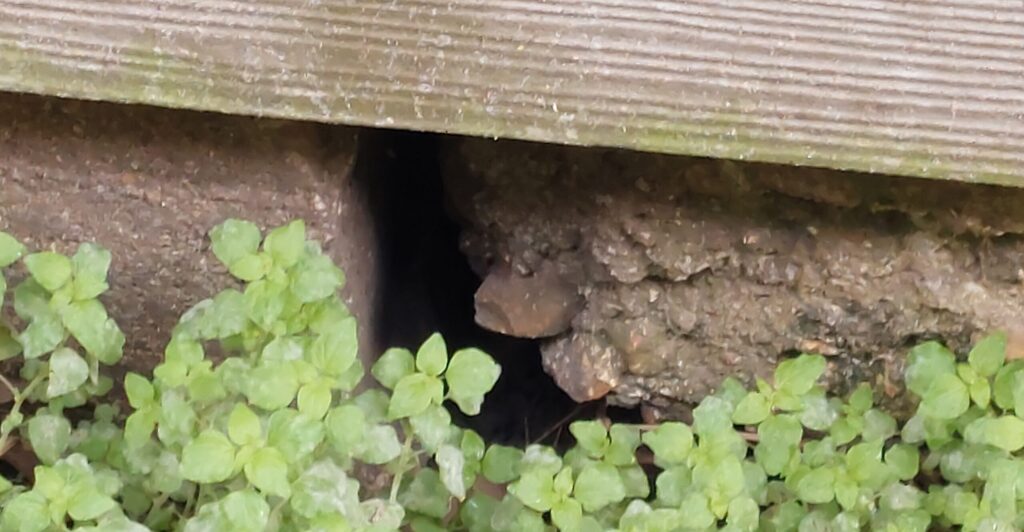Foundations are designed to accommodate pressure and movement while holding up the house structure. However, what we call “gumbo clay” is an expansive clay soil mixture in the Southeast Texas area that must be properly maintained. When wet, each molecule of this soil can expand and create hundreds of pounds of pressure. When one area dries and another is still wet, soil movement can cause differential settlement and form cracks in the foundation. This is why proper landscaping and drainage is so important. Much like vehicles, the best approach is preventative maintenance to correct issues before they happen.
High Soil
Every year people mulch gardens next to the house to create a welcoming and beautiful appearance. Unfortunately, when the soil is high against the house it also creates a welcoming environment for ants and termites. The soil should be kept a minimum of 4 inches below masonry and at least 6 inches for all other siding. If the soil line is kept at the same level, at a 2% grading away from the house, it won’t hold water against the foundation. When the soil line and grading is correct, the top of the foundation shows and can be monitored for cracks while preventing them in the first place.
Negative Grading
When the grading is negative, sloping toward the home, it holds water against the foundation. Depressions in the soil form and the water often sits for days, which is called “ponding of water.” These areas of ponded water may be caused by dogs digging to keep cool, sprinkler systems spraying on the house, or not having gutters.
When the house doesn’t have gutters or they are full of debris, the rain pours off of the house and creates a drip line in the soil where it erodes. Over time the line grows and often holds water against the foundation. Because Houston has so much rain, draining the water away from the foundation is important.
Yards often need to be re-graded from time to time. The appropriate slope for the ground is a 6 inch drop away from the house over a distance of 10 feet (a 2 percent grade). Where there isn’t 10 feet between homes, at least a 3 inch drop is needed to direct water away from the home.
Rocks
People have good intentions when they put rocks next to the house to help it drain better, or keep from walking in mud. But, if the yard wasn’t properly graded away from the foundation before the rocks were added, it may cause the water to be diverted underneath the foundation. This causes a serious problem that can’t be seen, and the soil underneath may stay wet for a long time without knowing it. Water under the foundation can cause the foundation to heave (push up in the middle) and crack. To prevent these and other foundational issues, have a professional landscaping contractor design a solution to divert the water away from your house.
Solutions
Most homes built in the last 20 years in the Houston Metropolitan Area have gutters and swales that are often combined with subsurface drains. Swales are shallow (mild) ditches that start in the back yard and slope toward the front to move water away from the house and to the street. Subsurface drains use solid pipes with a series of grating drains called bubblers that drain water to the street. Subsurface drains are not French Drains. French Drains are not recommended by most civil engineers in the Houston area because they are often incorrectly installed and hold water instead of removing water. Gutters, swales and subsurface drains are the best option to make sure your yard drains properly. These tips keep the foundation healthy and help your house last a lifetime!
Check out this video explanation: Expansive Clay Mixture and Foundation Problems

